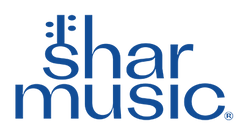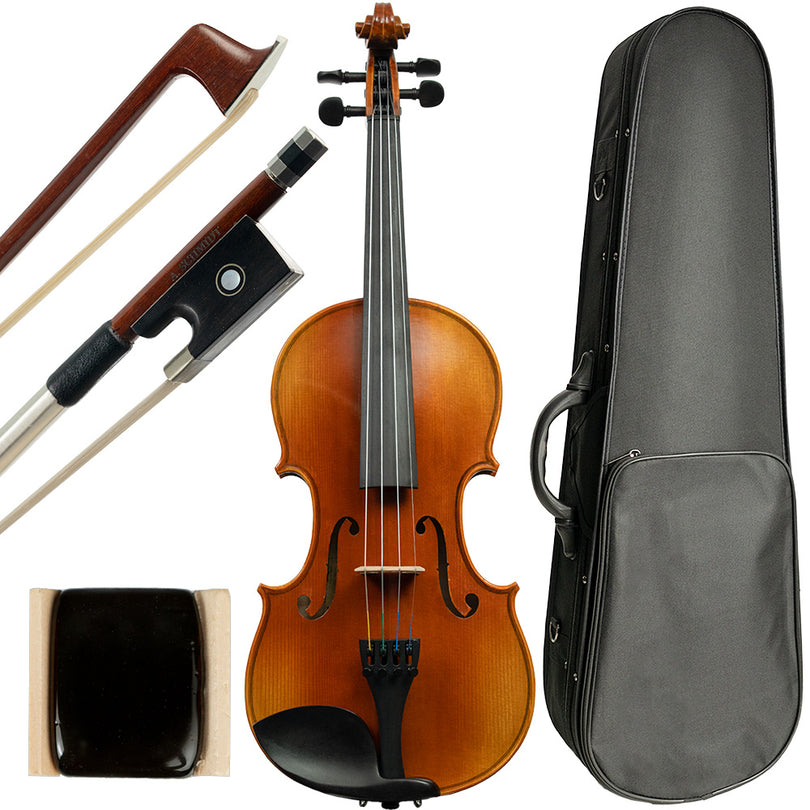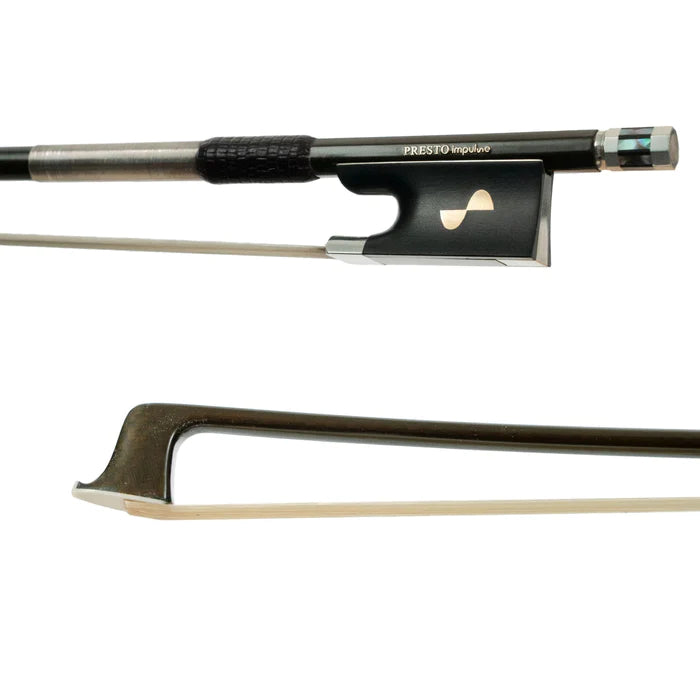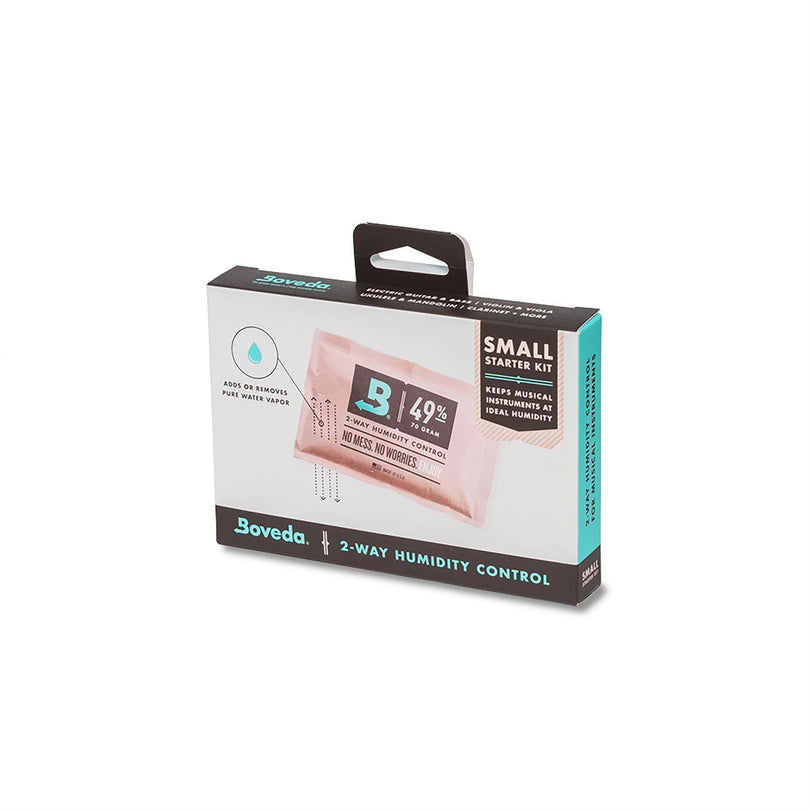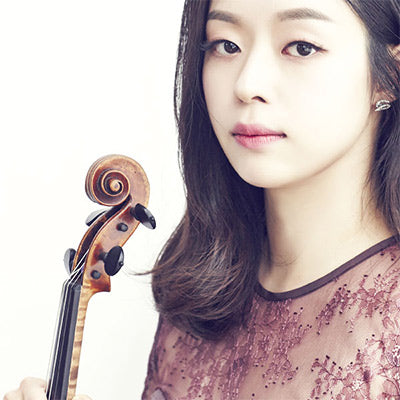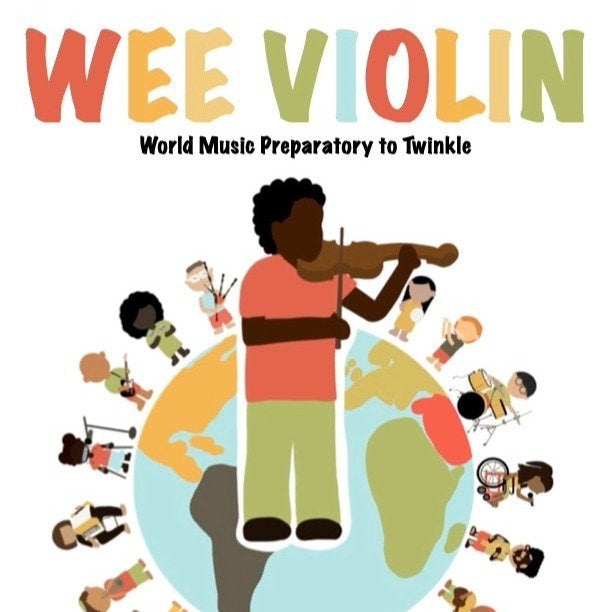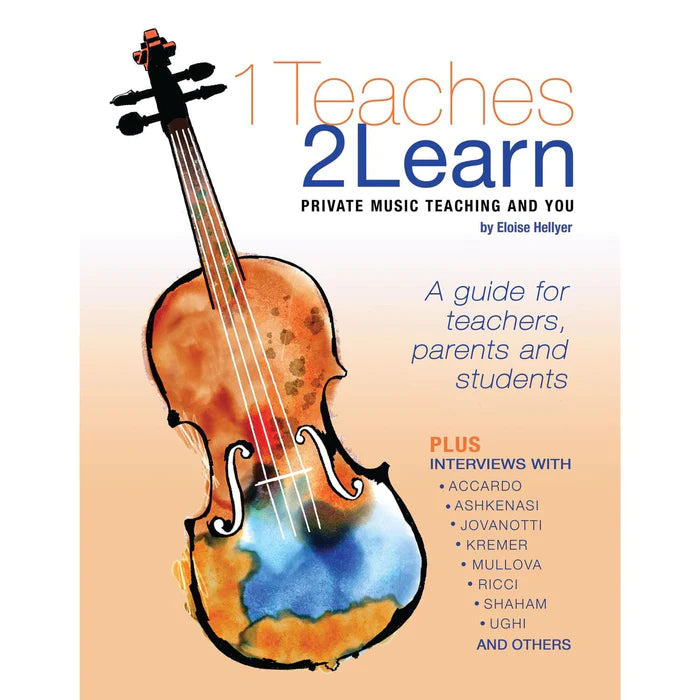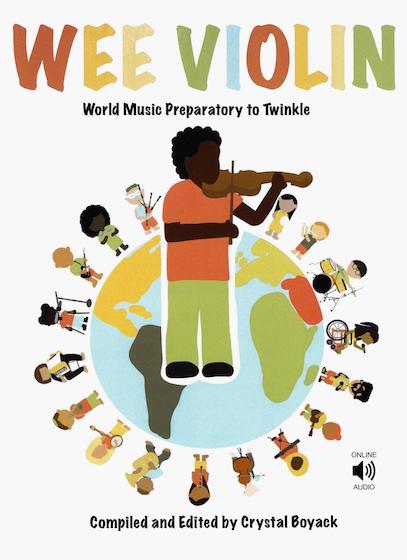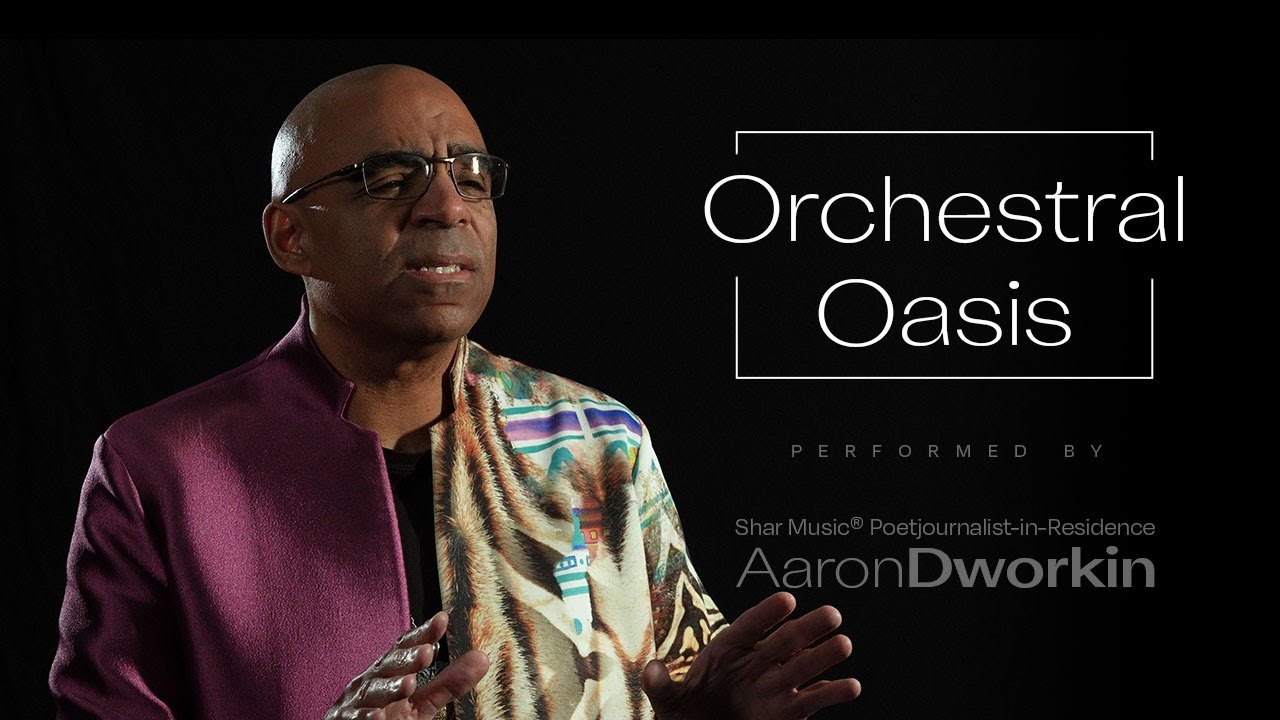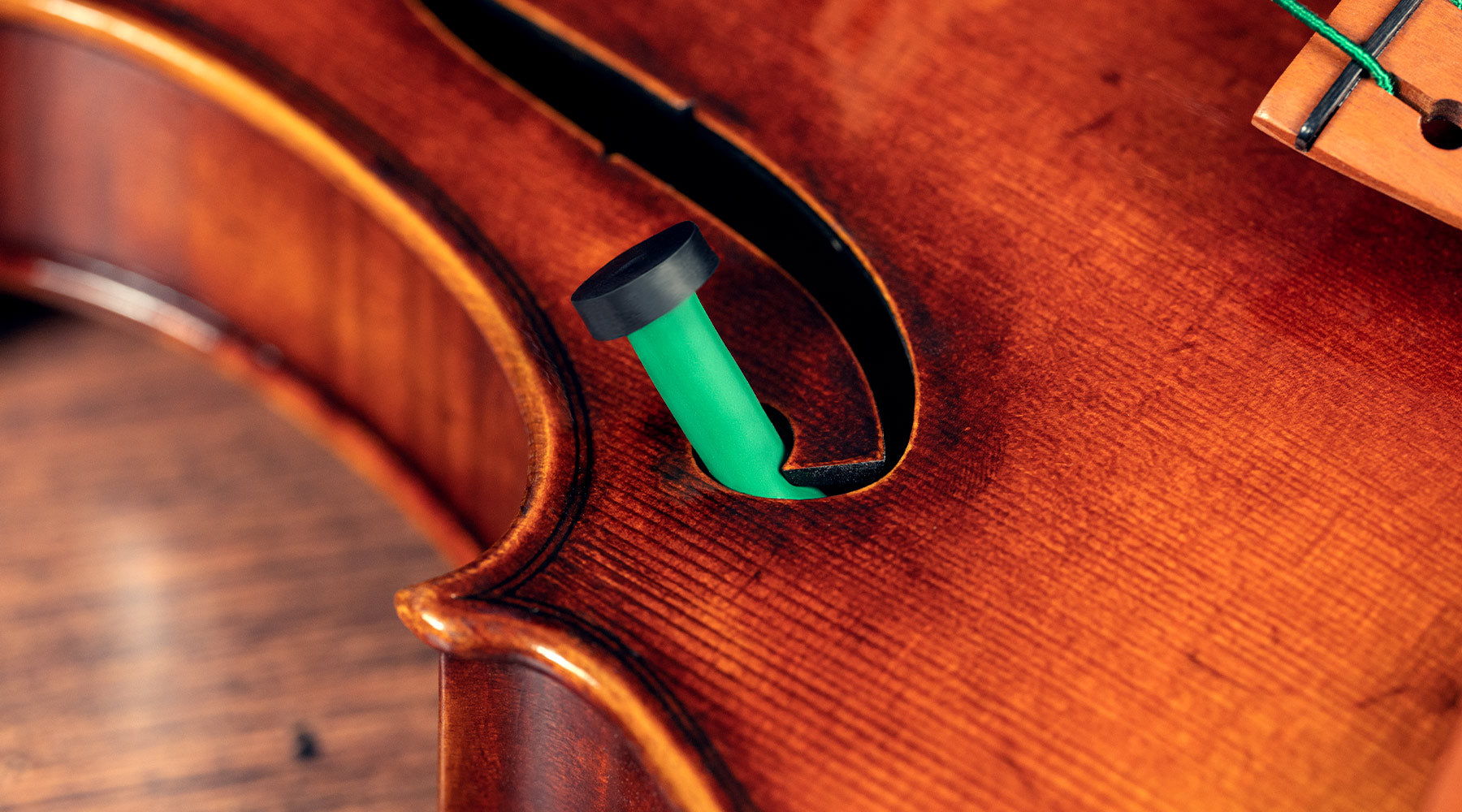*This blog was originally posted on violinist.com, and has been reposted here with permission from the author, Laurie Niles.
Teaching the Youngest Violin Students: Crystal Boyack's New 'Wee Violin' Curriculum
Teaching violin to a three-year-old beginner certainly is a lot different from teaching a nine-year-old, or a teenager, or an adult. For one, they need simple tasks, broken down. They need to spend more time on each task. They need profound patience from parents and teachers.
But what the biggest thing both parents and children need, to avoid crashing and burning by age four? They need joy in the music-making!
That's what violin teacher and parent Crystal Boyack was seeking, when she started creating Wee Violin, a program she officially launched in spring 2023.

Violin/viola teacher and author Crystal Boyack.
Wee Violin is a collection of 33 traditional tunes from around the world that Boyack put together over a period of five years, designing a curriculum to support "Pre-Twinkle" beginners ages three through seven. The songs are meant to support instruction with singing, not necessarily to be played in their entirety on the violin. The idea is to make things like drills and directions and more enjoyable and musical.
"When my daughter was three, I thought it would be a great idea to teach her to play the violin," said Boyack, who is based in Albuquerque, N.M. and teaches Suzuki violin and viola, as well as Music Together. "I had taught hundreds of students, moving them successfully from first lessons to concertos - why should my own daughter be any different?"
"It was different," she said. "I would ask her to play 'taka taka stop stop' and she would say, 'No.' I would ask her to make a bow hold and she would collapse to the ground, crying."
"It didn't take long before we were in trouble. Violin lessons were in trouble, but even more heartbreaking, our relationship was in trouble," Boyack said. "Everything was tense, everything was a chore. There was no joy to be found in or out of the practice room."
She realized, though, that her daughter still loved music. One day when she was singing in the kitchen, her daughter peeked around the corner, then slowly joined her. Before they knew it, mother and child were dancing and singing "She Was Coming Around that Mountain," full of the joy that they were losing in the violin lessons.
That is when the light bulb went off for Boyack.
"I immediately threw out the repertoire I had been using to prepare for Suzuki Book 1 and began a total overhaul," Boyack said. "I started finding music that brought joy, peace, love, healing, connection and beauty. I looked for music that had intriguing melodies, beautiful harmonies - music that had existed for generations and across the world. Then, I adapted each of those pieces of music for a technique we needed to learn before we started Book 1."
This was during the time when the Black Lives Matter was gaining prominence, so she started looking for African-American music. Then news out of Afghanistan had her looking for music from there. Pretty soon she decided this needed to be a global collection.
"I realized, this is powerful, and I want all families to have this," Boyack told me. "That is when I started to look at what repertoire I had, to make sure I had something from every corner of the world. I wanted families to have those tools to connect their kids with all kinds of cultures, to have a jumping off point to discuss whatever is going on."
Just taking a quick look at the table of contents, the songs in Wee Violin are American, Russian, Slovakian, Austrian, Spanish, Cuban, Maori, Ghanaian, Japanese, Congolese, Israeli, Irish, Chinese, Canadian, African-American, Jamaican, Mexican, Sinhalese, English, Brazilian, Argentinian and Czech. They include both the original language and English translations for singing.
At this point the Wee Violin includes books for violin students and for violin teachers as well as an online, self-paced teacher training course outlining the many ways to use the repertoire along with examples from private lessons, group lessons and performances. Books for viola, cello are in development.
Boyack's Wee Violin curriculum aims to bridge the gap between early music education programs - such as Music Together, Suzuki Early Childhood Education and Kindermusik - and the first piece that students learn in the Suzuki books, the Twinkle Variations.
By now Boyack's daughter is nine and making her way through the Suzuki violin books, and she also has a seven-year-old son and twin four-year-old boys, who just finished the Wee Violin curriculum.
Last spring, I actually took Boyack's teacher training class myself, when she was offering a live zoom version. I found myself using the songs in the collection right away, especially for helping young students with their bow holds. She presented some unique ideas also about starting beginners - most notably, starting with the third finger, up in position, on a "high mark" harmonic. (This idea was first presented by Edmund Sprunger in his book, Building Violin Skills). The idea is to get the wrist in the right position immediately, set up the idea of a hand frame, and also learn to touch finger in a very precise place (a harmonic won't work if the finger is not in the right place). She also presented a lot of ideas for using "learning props" such as scarves, shaker eggs, and rhythm sticks.
At first I thought Wee Violin would be an entire book of Pre-Twinkle "songs" to play, but it is designed for a combination of singing and playing. The tunes can be sung by everyone, or played by a more advanced student or teacher, and there is a simplified part for the pre-twinkler to play. The pre-twinkler parts are presented in a sequence that helps in learning rhythms and finger placements for the Twinkle Variations. The Wee Violin tunes also can be sung while learning violin skills and preparing for Suzuki Book 1. And while an older beginner might not need this, it is helpful for the very young beginner, who requires that skills be broken down much more, and for a longer period of time. That said, the songs can also be used for remediation for an older child who needs to fix positioning or other issues.
Here are a few general examples of how the repertoire can be used in addition to just playing: crossing the midline of your body, standing in rest position, standing in one place long enough to hold a violin, identifying fingers by number, placing fingers in a way that eventually will work for a bow hold, placing the violin on the shoulder, placing the hand on the violin, placing just one finger down correctly, strengthening little fingers, moving the bow arm to a particular rhythm, forming a bow hold.
All these violin skills require repetition, and the Wee Violin repertoire helps usher a child through those in a way that feels like a game. Nearly all the repertoire also includes built-in “stop and think” places where the parent or teacher can adjust technique to ensure correct placement.
Since the book came out last spring, Boyack has been presenting "Wee Violin" and her ideas around the country, at the American String Teachers of American Conference in Orlando and in Suzuki Association of the America Workshops. It's starting to catch on.
“The magic of using folk song lyrics to give children physical directions for how to shape and move their bodies works on all levels - The Hokey Pokey comes to mind - because it brings melody and lyric to instructions," said Los Angeles-based Suzuki violin teacher Carrie Salisbury. "Boyack has added a great asset to our Pre-Twinkle tool kit by giving us more 'instruction-based' songs to use with little ones. I especially like having more advanced students play the tunes from the book at group classes where the young ones can participate in their unique way to the songs being played live for them."
"Wee Violin has completely transformed the way I teach young beginning students," said Claire Allen, longtime Violinist.com contributor who teaches violin in Annandale, Virginia. "I've been looking for a better way to teach left hand technique, and the concept of starting with third finger, not first finger, is incredible. The songs are fun, catchy, and easy to convince my students and families to listen to."
This kind of feedback has been gratifying for Boyack.
"I am getting e-mails daily, and seeing other teachers reactions has been wonderful," Boyack told me. "There was a family with a grandpa from Sri Lanka, and they were so excited to see a song from Sri Lanka. They even called their grandpa, to have him sing the song for them. So it's not just enhancing my studio, but connecting other studios with the music from around the world."
